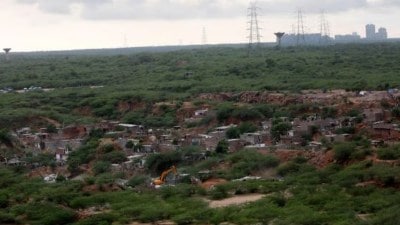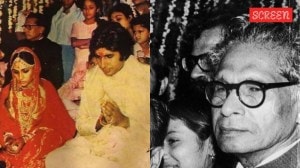BJP’s Rajya Sabha MP Medha Kulkarni came under fire last week for leading a march of Hindu activists and “purifying” a site at the historic Shaniwar Wada in Pune, days after a few Muslim women visitors offered namaz there. Opposition parties have called for Kulkarni’s resignation.
Here is what to know about Shaniwar Wada.

The Peshwa’s seat of power
Shaniwar Wada was the home of the Peshwas, the trusted and powerful Prime Ministers of the Chhatrapati rulers of the Maratha Empire and the leaders of the Maratha Confederacy. The Maratha Empire began with the coronation of Chhatrapati Shivaji Maharaj in 1674, and by the 18th century, it dominated large parts of the Indian subcontinent.
Chhatrapati Shahu, the grandson of Chhatrapati Shivaji Maharaj, appointed Balaji Vishwanath Bhat as the first Peshwa in 1714. A Peshwa’s duties spanned everything from administration to diplomacy and the expansion of the kingdom. Balaji Vishwanath Bhat died in 1720 and was succeeded by his son, the 20-year-old Peshwa Baji Rao I, an astute military genius and warrior who extended the borders of the Maratha empire to Malwa, Gujarat and Bundelkhand, taking it almost to the gates of Delhi.
The Peshwa decided to relocate his home from the ancestral wada or mansion in Saswad to Pune. The foundation stone of the mansion was laid on January 10, 1730, a Saturday, giving the mansion its name. A plaque inside the monument reminds visitors that construction took two years and cost Rs 16,110. “It was one of the most magnificent mansions,” says the plaque.
“As the family grew, and generations were born, different requirements arose and were met. If you look at the structure of Shaniwar Wada, it becomes clear that it was built over a period of time to fulfil administration and residential needs,” says Sandeep Godbole, a heritage walk leader who guided a tour of the site for G20 delegates in 2023.
The monument featured elements including the Thoriya Rayacha Diwankhana, Baji Rao I’s Court Hall, Nachacha Mahal, the dancing hall, and Juna Aarse Mahal or the Old Mirror Hall. Among the aesthetic highlights were a lotus-shaped fountain with a thousand fountain heads, murals depicting scenes of the great epics and pillars shaped like cypress trees.
Ever since Shaniwar Wada was burned to the ground in 1827, all that remains of these grand interiors are ruins. The fortification wall still looms over crowds of visitors, who spread across the premises, tracing the five gates – Dilli Darwaza, Mastani Darwaza and Ganesh Darwaza, among others. They stand on the ramparts and survey the plinth of the gutted mansion. In 1921, the Governor of the Bombay Presidency, Sir George Lloyd, undertook a restoration effort of the ruins ahead of the Prince of Wales, Prince Edward’s visit to Shaniwar Wada.
Story continues below this ad
A home for a Muslim princess
Peshwa Baji Rao I is also known today for his love for the Muslim princess, Mastani, who was one of the residents of the Peshwa’s new residence, according to Rahul Magar, a historian.
“Mastani was living at Shaniwar Wada. We can make an educated guess that Peshwa Baji Rao allowed her to practise her faith, and she would have offered namaz. That kind of tolerance was present,” Magar told The Indian Express. “Besides Mastani, there doesn’t seem to be any big name of the Muslim community who was living in the complex of Shaniwar Wada.”
He added that there were Muslims in the Peshwa’s armies, although there aren’t enough sources to estimate the percentage of Muslims in the army. “It was one of the important occupations for people of all religions and castes. Ibrahim Khan Gardi was a famous Muslim artillery expert who served under the Peshwas. Some units of the top khana used to be handled by Muslims,” Magar added.








































